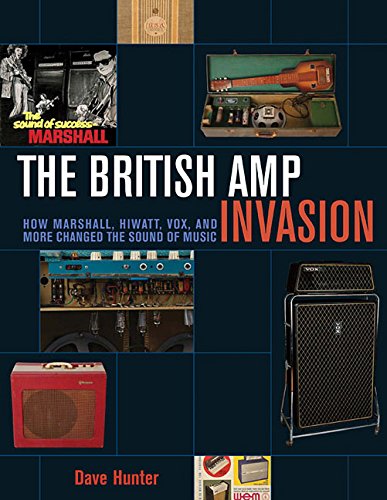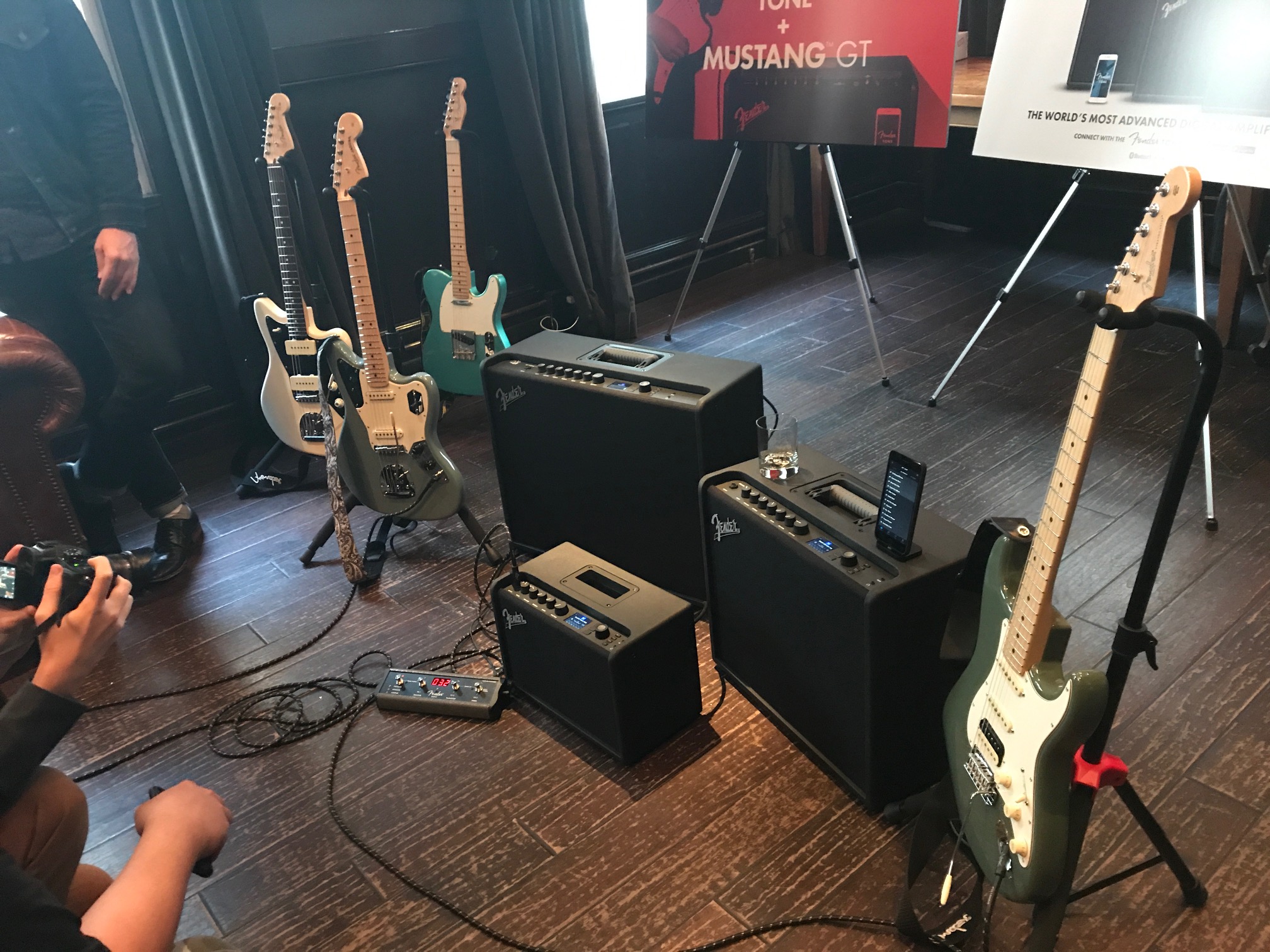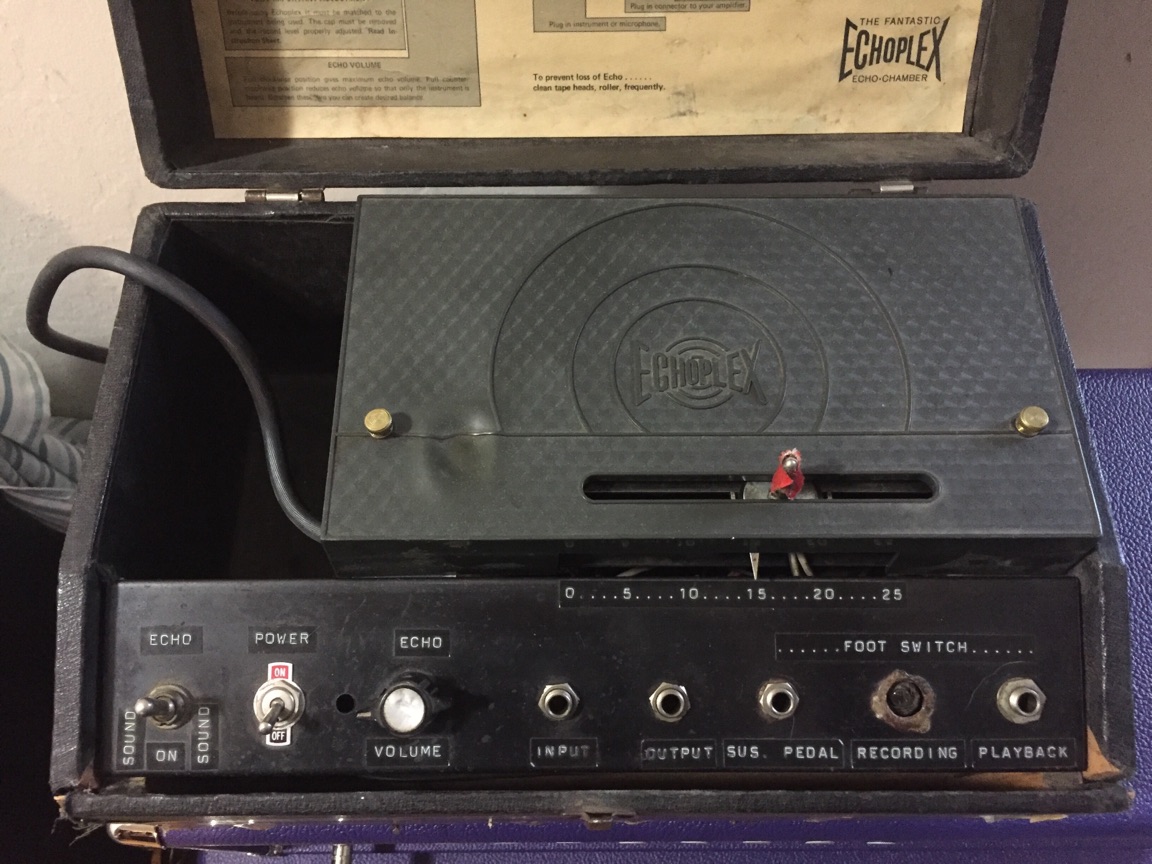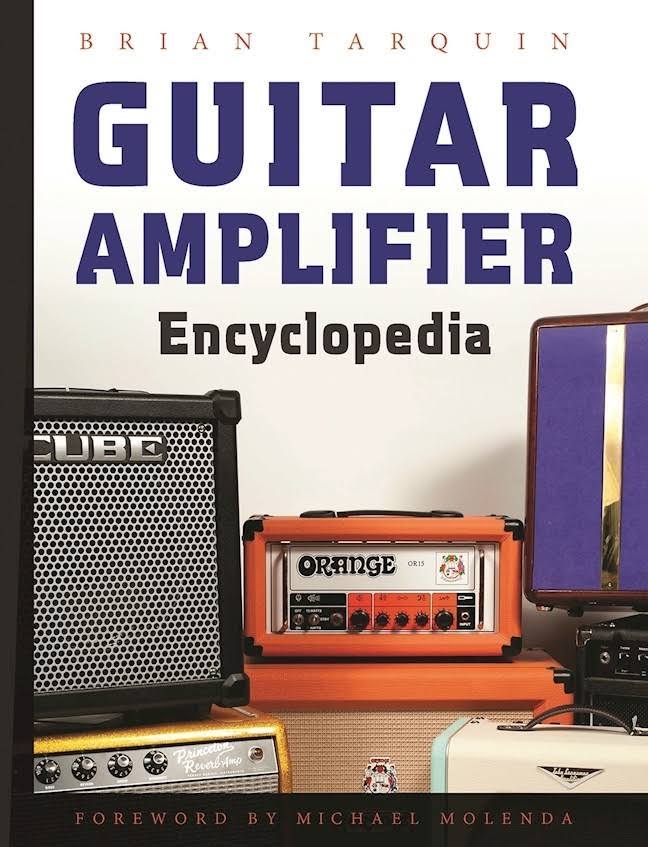Many pieces of my collection of instruments, amplifiers, pedals and more that I’ve enjoyed over the years are now being offered for sale. I’ll continue to list more as I can so do check back often. Contact me directly for pricing IF it’s not listed as the market always fluctuates, BUT I will always strive to provide both fair and often below-market pricing for these pieces. It’s time to let others enjoy them and I’ll note where there’s special provenance or history of use behind them. Contact me directly at [email protected] to discuss. Enjoy the list and photos!
Category Archives: Amplifier Features
Dr. Dan 12000 Series 1968 Marshall Super Lead Replica Nails the Early EVH Amp Tone!
 Many amplifiers have come and gone in my music room through the years, and a small handful have been genuinely missed. One in particular that I was always interested in having back in the fold was an original 1968 Marshall model 1959 Super Lead with the serial number range in the 12,000s. I owned just one many years ago but had needed to sell it, along with many other pieces, during a more challenging time in life. The memory of that amp remained with me through the years that followed as it had that perfect blend of creaminess and crunch in its tone as well as a feel that delivered the perfect amount of compression. Indeed, it was truly one of the good ones. And no doubt the best Marshall I’ve ever had.
Many amplifiers have come and gone in my music room through the years, and a small handful have been genuinely missed. One in particular that I was always interested in having back in the fold was an original 1968 Marshall model 1959 Super Lead with the serial number range in the 12,000s. I owned just one many years ago but had needed to sell it, along with many other pieces, during a more challenging time in life. The memory of that amp remained with me through the years that followed as it had that perfect blend of creaminess and crunch in its tone as well as a feel that delivered the perfect amount of compression. Indeed, it was truly one of the good ones. And no doubt the best Marshall I’ve ever had.
Continue reading
HOT MOD V2 EVO: The Ultimate Marshall High-Gain Plug-in Tube Modification Module!
 Introducing the LegendaryTones HOT MOD V2 EVO, a plug-in dual tube module specifically engineered to dramatically increase gain in Marshall and other amps. The HOT MOD V2 EVO requires NO chassis cutting, drilled holes, or wiring modifications to your amp – it simply and easily installs in place of the appropriate cathode follower (often V2) position. The circuit within harnesses the power of an additional gain stage now running an additional tube.
Introducing the LegendaryTones HOT MOD V2 EVO, a plug-in dual tube module specifically engineered to dramatically increase gain in Marshall and other amps. The HOT MOD V2 EVO requires NO chassis cutting, drilled holes, or wiring modifications to your amp – it simply and easily installs in place of the appropriate cathode follower (often V2) position. The circuit within harnesses the power of an additional gain stage now running an additional tube.
Want your classic Marshall to sing with increased sustain and pure vacuum tube tone? Your tube high-gain solution is here. No solid state tricks or clipping diodes. 100% pure tube gain. The HOT MOD V2 EVO circuit was carefully designed to give you gradual increases of gain when using the amp’s preamp control. From adding a touch of sweet sustain, to full on metal, your Marshall will now have greater flexibility and deliver a wider range of tones.
Continue reading
Will my Hot Mod V2 or Lynch Mod/Mr. Scary Mod work in my amp?
Perhaps this is the most common question we receive here when people first inquire about the Hot Mod V2, Lynch Mod, and Mr. Scary Mod. And of course we also offer a reverse-wired version so that either model can also function in many of the reissue amps which the original Soldano Hot Mod could not. In general, although there are non-master and master volume amps listed here, note that all of our mod devices generally work better if your amp has a master volume on it. So here is the list:
SOLD OUT for 2020 – Stay tuned for a new model! Hot Mod V2 Now Available for Marshall Studio Series Heads!
We’re excited to announce that we have engineered the Hot Mod V2 to now work within two of the newest Marshall Studio Series amps: the Studio Classic, a portable replica of the JCM 800 2203, and the Studio Vintage, Marshall’s mini version of the famed 1959SLP non-master volume amp.
LegendaryTones Hot Mod V2 and Lynch Mod/Mr. Scary Mod Customer Testimonials & Videos!
 We are honored and humbled by the great feedback we’ve received from customers since releasing the LegendaryTones Hot Mod V2, Lynch Mod, and Mr. Scary Mod high-gain tube modules. Nothing is more satisfying than to create something that others can enjoy and be inspired by. Here are just a few testimonials below:
We are honored and humbled by the great feedback we’ve received from customers since releasing the LegendaryTones Hot Mod V2, Lynch Mod, and Mr. Scary Mod high-gain tube modules. Nothing is more satisfying than to create something that others can enjoy and be inspired by. Here are just a few testimonials below:
“My friend, I am absolutely blown away. I tried it in my 900 and it sounds amazing, I love how articulate the notes still are…Just ran my 900 with your HMV2 and the original (Soldano Hot Mod). I’m so liking yours way more. Just keeps more of your tone intact. I’m really enjoying it. Very responsive. Gets the same growl, but only if you really crank the preamp. The original is pretty much on 11 as soon as you turn your amp on. I’m pretty sure the Soldano Hot Mod is going to go on eBay. Yours is way more usable.”
-Chris B.
Continue reading
Stories of The British Amp Invasion Come to Life
 Dave Hunter’s latest book is entitled, The British Amp Invasion: How Marshall, Hiwatt, Vox, and More Changed the Sound of Music, and covers a span of the influence of British amplification from the late 1950s onward. As an industry, the companies behind the amplifiers are a fascinating study, not only from a design and sonic perspective, but also because of the stories themselves that surround their business success and growth (or for some, their bad deals and decline).
Dave Hunter’s latest book is entitled, The British Amp Invasion: How Marshall, Hiwatt, Vox, and More Changed the Sound of Music, and covers a span of the influence of British amplification from the late 1950s onward. As an industry, the companies behind the amplifiers are a fascinating study, not only from a design and sonic perspective, but also because of the stories themselves that surround their business success and growth (or for some, their bad deals and decline).
Continue reading
When Newer IS Better – Fender Innovates with New Mustang GT Amps and Tone App
 Guitarists (myself included) tend to live in an unusually backward-technology world. Meaning, what was made back then was generally always considered better and more valuable than what is being made now. The proof is in our love of all things vintage, whether we’re talking tube amps, guitars, or effects.
Guitarists (myself included) tend to live in an unusually backward-technology world. Meaning, what was made back then was generally always considered better and more valuable than what is being made now. The proof is in our love of all things vintage, whether we’re talking tube amps, guitars, or effects.
While there is certainly some validity to the argument of certain aspects of “older is better” being true (I would argue that this is true if we are speaking about vacuum tube production, wood availability in guitars, etc.) compared with what’s currently available now, continuing to make the claim of “older is always better” when discussed as an ENTIRE category of guitar gear I would say is false. And I still love vintage gear, but let’s explore this a bit and really think about it and remove our blinders for a moment.
Continue reading
George Lynch’s 1973 EP-3 Echoplex Tape Echo Previously Owned by Eddie Van Halen
 I wanted to share an interesting story and historical piece for you, our dear readers. First some background on the Echoplex tape echo. If you haven’t played through an Echoplex, they are truly legendary tape echo units and should be experienced. In the 1960s and 1970s, when you wanted echo, tape echo was the way to do it. When smaller solid state echo pedals emerged during the mid ‘70s using Bucket Brigade Device (BBD) technology, they were convenient, but lacked the ability to produce long repeat times versus what a tape delay could offer (most analog solid state delay pedals were limited to just 300ms. of delay time). They also sounded different.
I wanted to share an interesting story and historical piece for you, our dear readers. First some background on the Echoplex tape echo. If you haven’t played through an Echoplex, they are truly legendary tape echo units and should be experienced. In the 1960s and 1970s, when you wanted echo, tape echo was the way to do it. When smaller solid state echo pedals emerged during the mid ‘70s using Bucket Brigade Device (BBD) technology, they were convenient, but lacked the ability to produce long repeat times versus what a tape delay could offer (most analog solid state delay pedals were limited to just 300ms. of delay time). They also sounded different.
Continue reading
Guitar Amplifier Encyclopedia by Brian Tarquin
 It’s no secret that the editorial staff at LegendaryTones shares a passion about guitar amplifiers. While famous guitarists around the world are mostly known for their association with particular guitars, we feel the amps are the true unsung heroes behind any guitarist’s rig.
It’s no secret that the editorial staff at LegendaryTones shares a passion about guitar amplifiers. While famous guitarists around the world are mostly known for their association with particular guitars, we feel the amps are the true unsung heroes behind any guitarist’s rig.
Continue reading